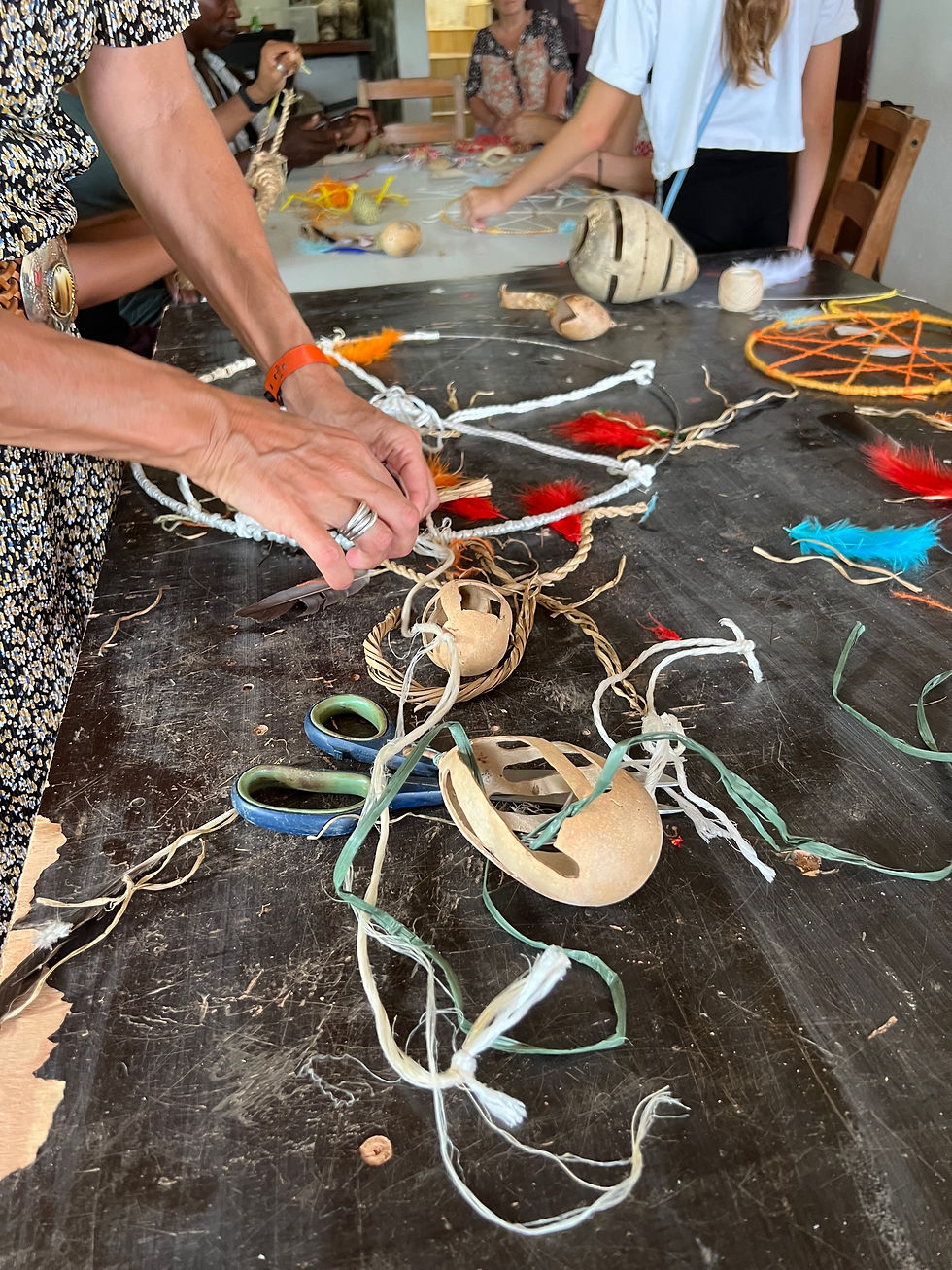Amerindian history of Martinique
- Claude Laurence
- Sep 26, 2022
- 2 min read
Updated: Jan 2, 2023

Professor of visual arts and art history in french national education, Régina VAN PUYENBROUK, president of the association Karib'Cultur, wishes to highlight the Amerindian component anchored in the Martinican identity. and more broadly in the Caribbean space. This approach aims to bring our populations to reclaim this part of their heritage, which is very often poorly known, and to restore its place to culture in general in our living spaces in Martinique.
However, it is appropriate to recall the difference between culture and heritage. Culture encompasses all the knowledge and behaviors that characterize a human group, a people. Culture is reflected in the way people express their ideas and creativity, their history, their heritage and their traditions. This is how, for example, we will distinguish in the world, Eastern, Western, African, Arab and other cultures... On the other hand, heritage is akin to a good, an inheritance; what is transmitted from one generation to the next and so on. It is said that heritage is the keystone of a culture since it preserves the identity of this culture.
Martinican culture is the result of a mixture of civilizations, Amerindian, African, French, Indian, but also Syrian-Lebanese and Chinese, which has formed over the last centuries and decades. Its particularities and its richness are its colorful and colorful Creole language, its beliefs, its religious tradition, its carnival, its literature, its architectural heritage, its customs, its gastronomy, without forgetting the flavor of its rums, and so on.
The history of Martinique is rather recent, even if the oldest traces of human beings found in the Lesser Antilles, in particular on the site of Saint Martin, are dated between -2400 and 1900 BC. The first traces of Amerindians in Martinique were archaeologically attested in the course of the first century. Its first inhabitants come from nomadic Indian populations of Amazonia and were called “Arawaks”. It seems that two waves of Amerindian settlement marked the history of the island. Indeed, Martinique has many sites where a rich archaeological heritage is updated. The archaeological evidence of the Amerindian presence dates back approximately to the beginning of the Christian era... More recently, several sites have been discovered in Martinique, which are prospected by archaeologists, such as those of Vivé in Lorrain, Dizac Beach in Diamant, Forest of Montravail in Sainte Luce, Anse Trabaud in Sainte Anne, Paquemar in Vauclin …
Also, history teaches us that the Amerindian populations have been decimated due to colonization, so that their oral culture has disappeared. Only the writings and stories of European colonizers at the time provided some information. Today, the work of archaeologists brings us new elements on their social existence.








Comments